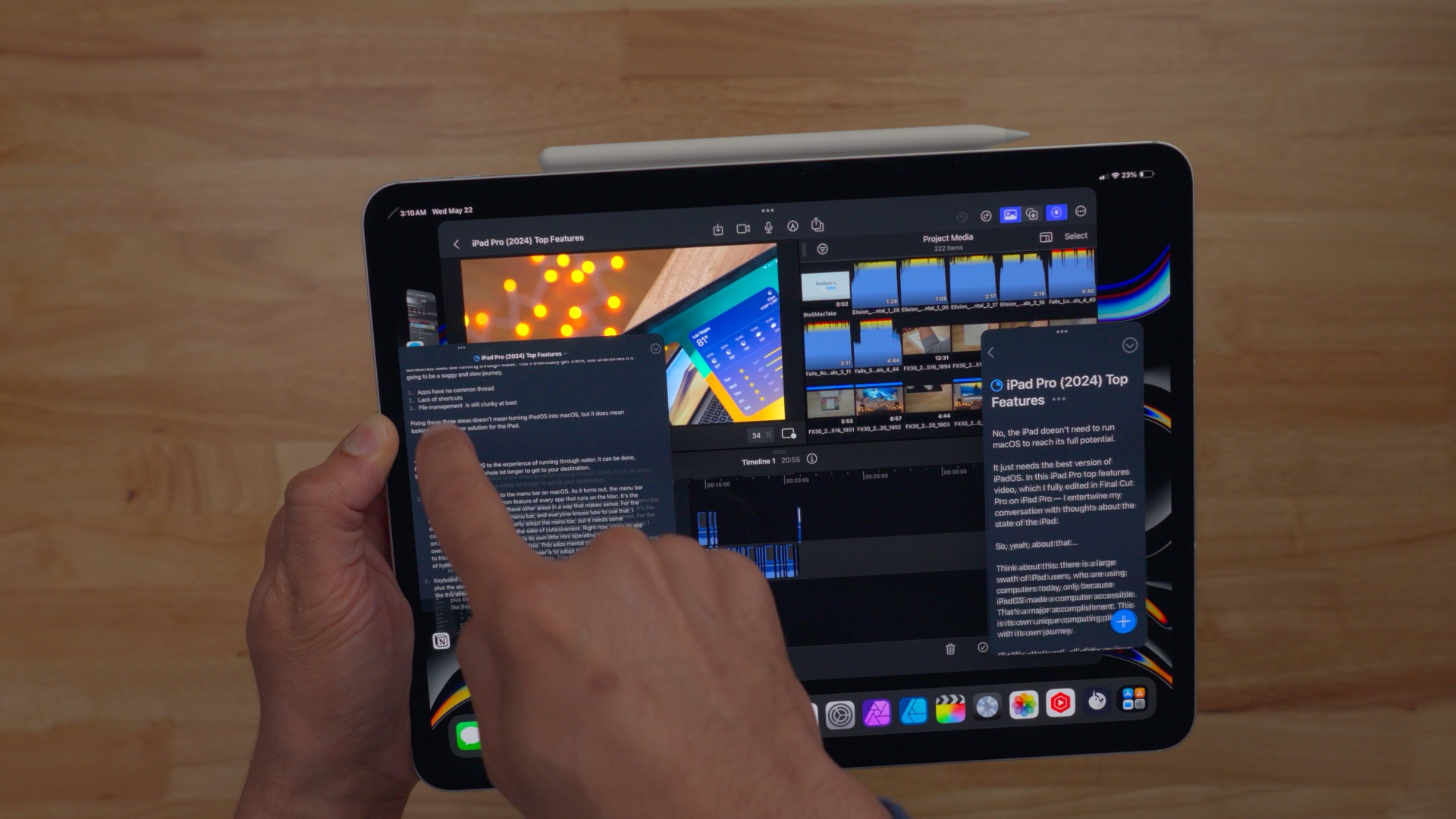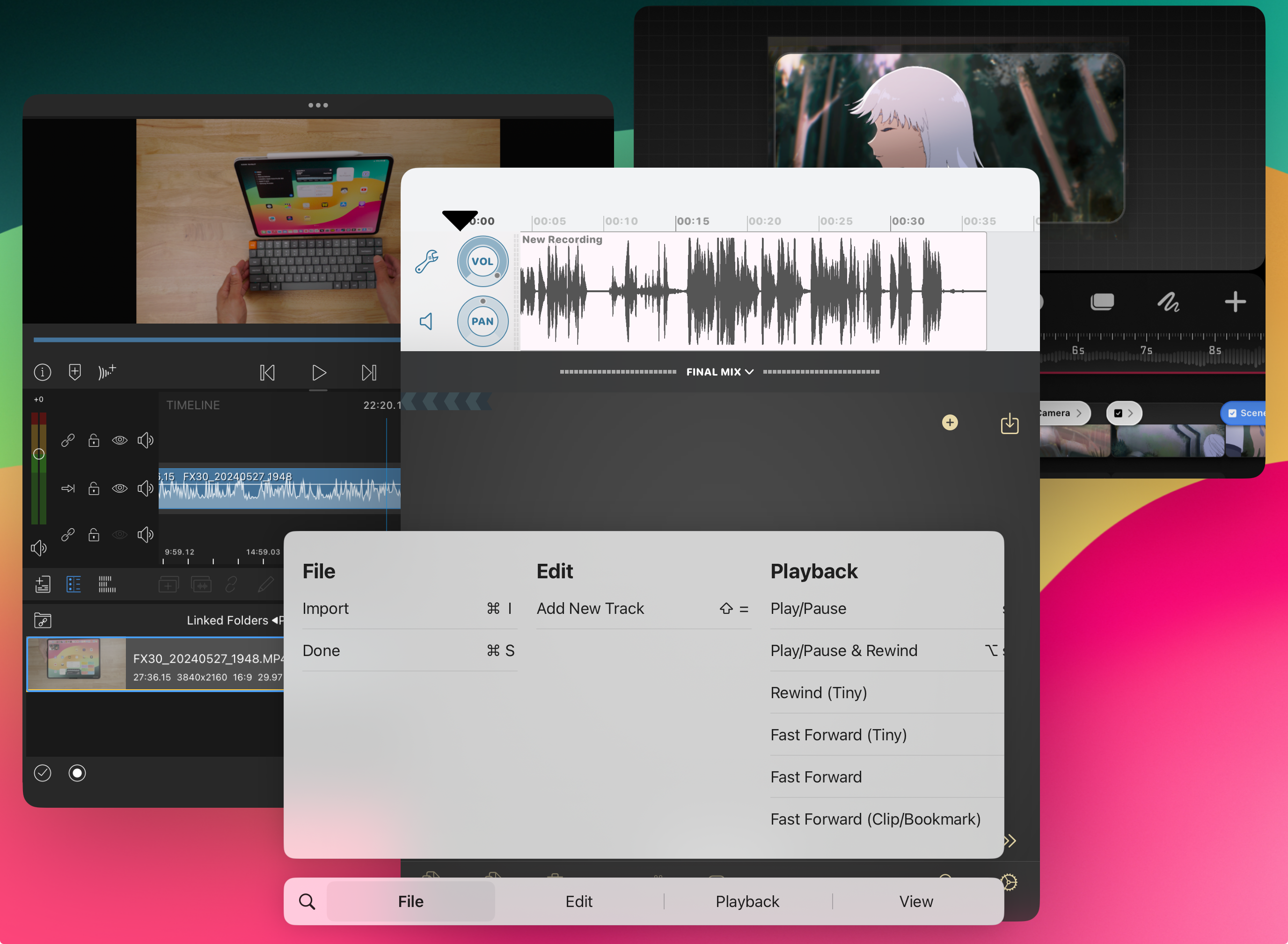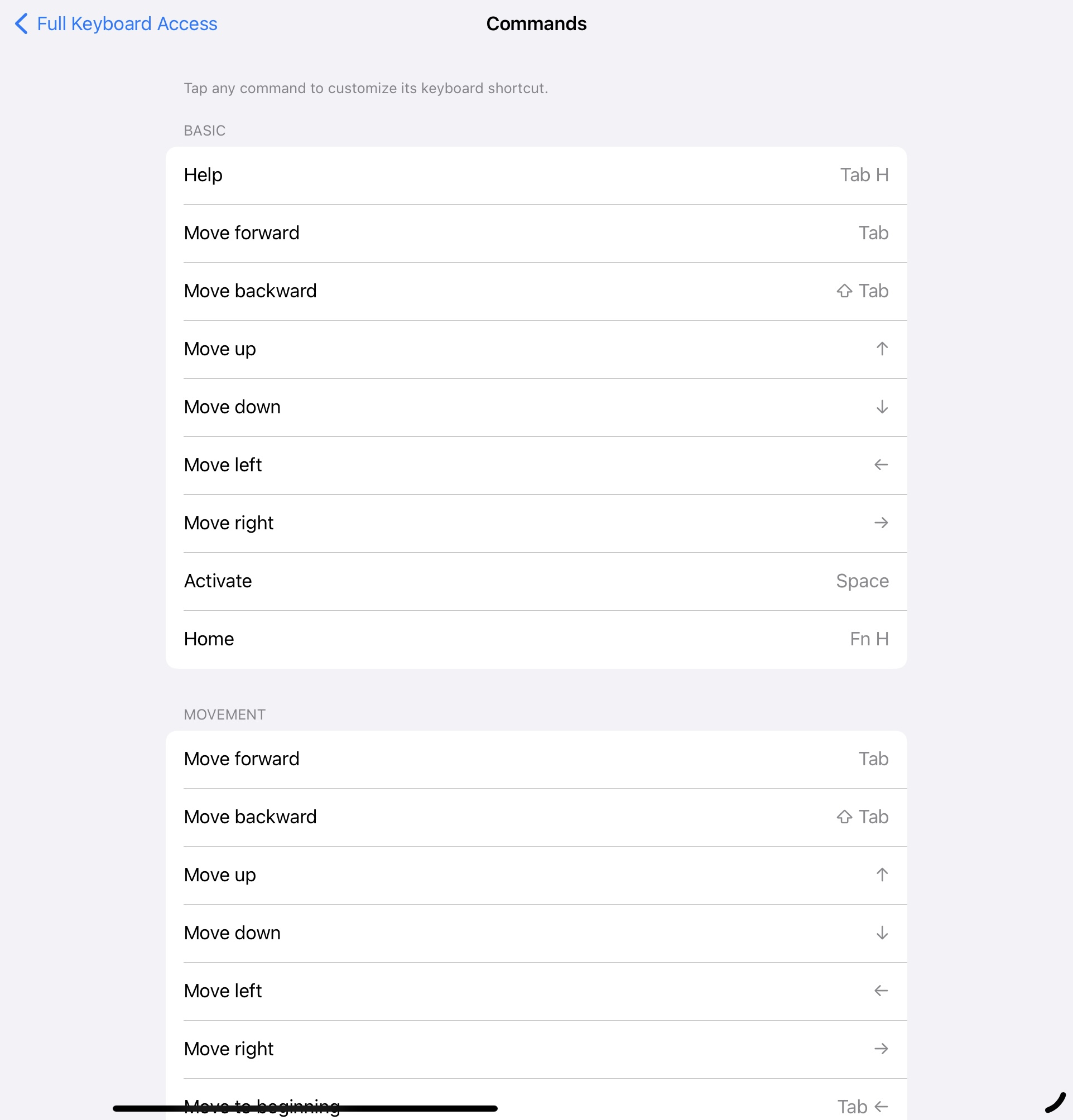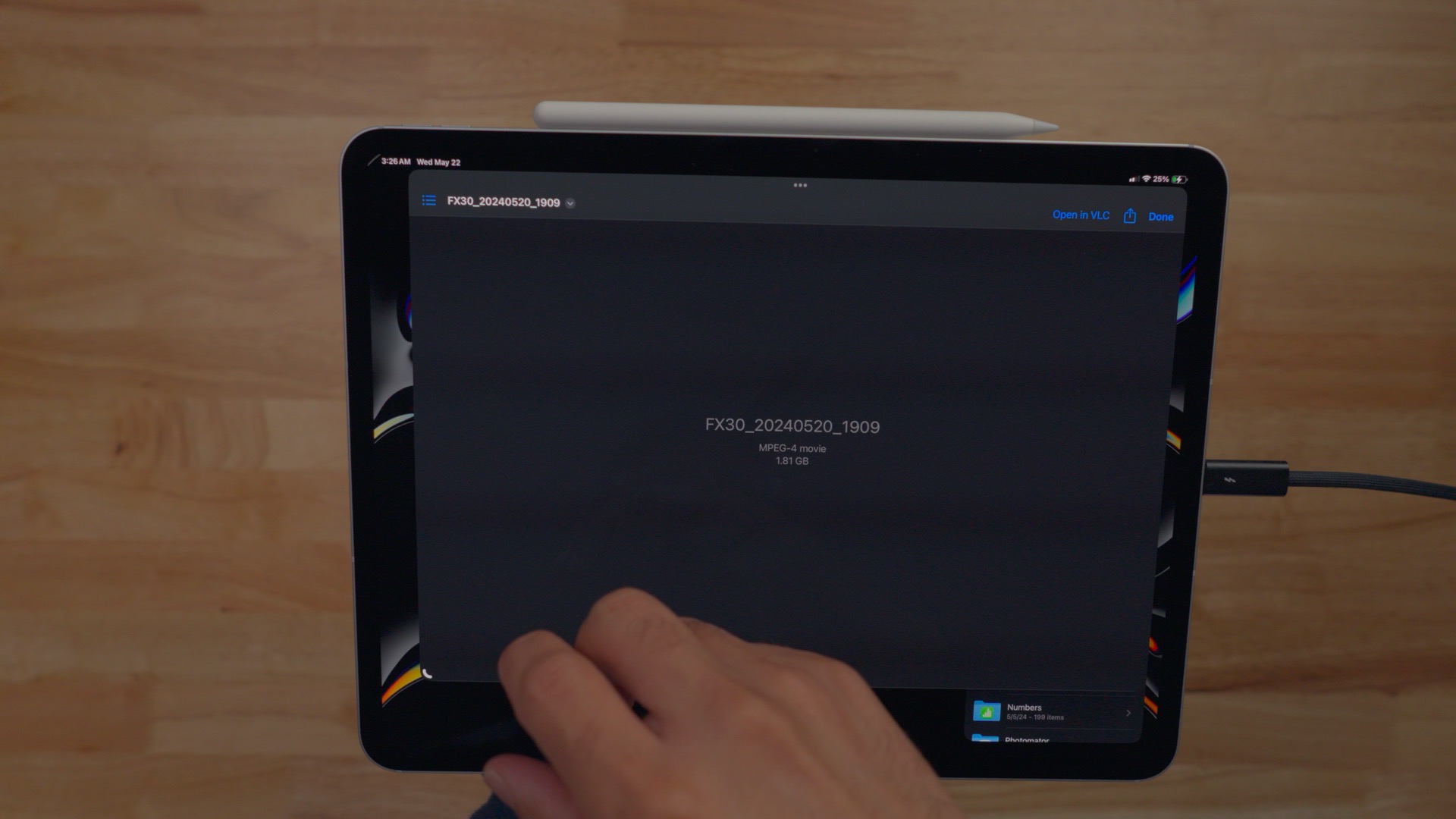Improving iPadOS != converting to macOS: The main features of iPad Pro
I’ve been using the new M4 iPad Pro exclusively this past week, resisting any urge to use my MacBook Pro as a crutch. Needless to say, it was educational, interesting and, dare I say it, a fun experience on many fronts. My biggest intake? The iPad has its flaws, but iPadOS doesn’t have to be macOS to be a good computer.
There is a large contingent of iPad users who use computers today only because of iPadOS and how accessible it is to them. The iPad has undoubtedly made computers more accessible to users who were once really afraid of computers. For that reason alone, we should give some respect to the iPad name.
Before the latest batch of iPad Pro reviews came out, I predicted what the story would be like, and I’m not even good at predicting. We’ve seen the same story over and over over the years. Yes, the hardware is great… but the software lags behind. Oh, and by the way, I’m guilty of that too.
For years, the iPad Pro has had hardware under the hood that is more than capable of getting things done. For some users, the shortcomings and idiosyncrasies of iPadOS have made it a challenge to get the most out of its power.
However, that doesn’t mean the iPad needs to run macOS to reach its full potential. It just needs to be the best version iPadOS.
What does the best version of iPadOS look like?
I don’t think it looks like Apple copied and pasted macOS onto the iPad. I think it still looks very similar to the iPadOS that comes out today, just with the kind of improvements and creature comforts that more advanced users expect. It also requires app developers to treat the platform as a first-class citizen.
There are many areas that I think iPadOS can improve on, but there are three main areas that I think are among the most important.
1. iPadOS apps and the need for common thread
iPadOS apps almost feel like their own little mini operating systems running on the iPad. This is because each app has its own unique method to interact with it, access necessary tools, etc. There is a missing common thread that connects all apps to make them a cohesive experience.

On the Mac, that common thread is the menu bar. It’s a place where, regardless of the app, you can go there and do a thing… whatever that thing is.
One could argue that the current methodology for viewing keyboard shortcuts – holding down the Command (⌘) key – is basically the iPadOS version of the menu bar. The problem with the keyboard shortcut menu is that it relies on a connected keyboard, is slow to call up and takes up too much space, I think it needs a more thoughtful redesign that caters to both touch and keyboard users.

2. Keyboard shortcuts, but taken seriously
This is both an iPadOS problem and an individual app problem. As fun and practical as touch interfaces are, they are not always suitable for certain tasks. Advanced users rely on keyboard shortcuts to get things done more efficiently.
Of course, iPadOS have keyboard shortcuts, but app developers, including Apple, need to take them more seriously. If it exists as a function, it should have a corresponding keyboard shortcut in most cases.
I encountered one of the most famous examples of this problem while editing the entire video embedded above on my iPad using Final Cut Pro. Apple’s pro NLE is an amazing experience in many ways, especially because of its touch interface. I think this app has tons potential and I’m excited about Final Cut Pro for iPad 2, which should ship next month.


That said, it’s missing features that video editors need that simply don’t exist yet, and that’s understandable given the app’s short existence. What is not so understandable is the lack of keyboard shortcuts for certain commands that does currently exist, such as copy and paste effects between clips. Since there were no keyboard shortcuts for those commands, I had to undergo the time-consuming process of manually copying and pasting effects between the hundred or so clips in my timeline to make them all match.
Apple should also implement a way to allow users to create their own keyboard shortcuts. Such a feature already exists to some extent as an accessibility setting in Settings > Accessibility > Keyboards > Full keyboard access, but it only serves to customize the keyboard shortcuts used to navigate iPadOS, not for individual apps.

3. File management for small
The Files app is a big improvement over its first iteration when it was called iCloud Drive. I appreciate that we now have more detailed information about files, how we can compress and decompress files, etc., but more flexibility is needed for users to manage files.

One of the many frustrating things I encountered was not being able to view video captured by my Sony FX30 via Quick Look. Opening the file with Quick Look produced a blank screen asking me to open the file in another application.
There are many small problems like this that, by themselves, are not a big deal. But when you start adding up the minor flaws of file management in iPadOS, it stands out.
iPadOS does not need to be “fixed”
I compared the difference between using macOS and iPadOS to perform the same task to the difference between running on land and running while submerged in water. Eventually you’ll both reach your destination, but who will finish first? Even better, who will be better off after jogging? Apple has released a lot of water that has compromised the iPad experience, but more needs to be done.
iPadOS is a very capable platform, with its own unique paradigms. Some of its disadvantages can be considered advantages, depending on how the light hits the prism, so to speak. Disadvantages can also drive innovation when engineers are forced to approach a problem in a different way.


iPadOS does not need to be repaired because that means iPadOS is broken. iPadOS needs to be improved and optimized. Improving the platform isn’t just about copying and pasting macOS onto the iPad. Improving iPadOS includes Apple paying attention to the most basic user experience and interface flaws, while also continuing to evolve it with new and unique features year after year. Apple hasn’t been perfect at it so far, but we have to admit how far the iPad has come in a relatively short time.
9to5Mac’s Take
While Apple probably should have read the room before releasing a controversial ad that crushed all the beloved physical relics of creativity in the thin and light iPad Pro, I get where it’s going with it. This machine can wear an infinite number of hats and is arguably the most versatile piece of consumer electronics ever created.
The software that runs it, iPadOS, is fine. A large number of users will agree with that thought. We just have to be patient, let iPadOS be iPadOS and allow the platform to continue to mature.
FTC: We use automatic affiliate links to earn money. More.
